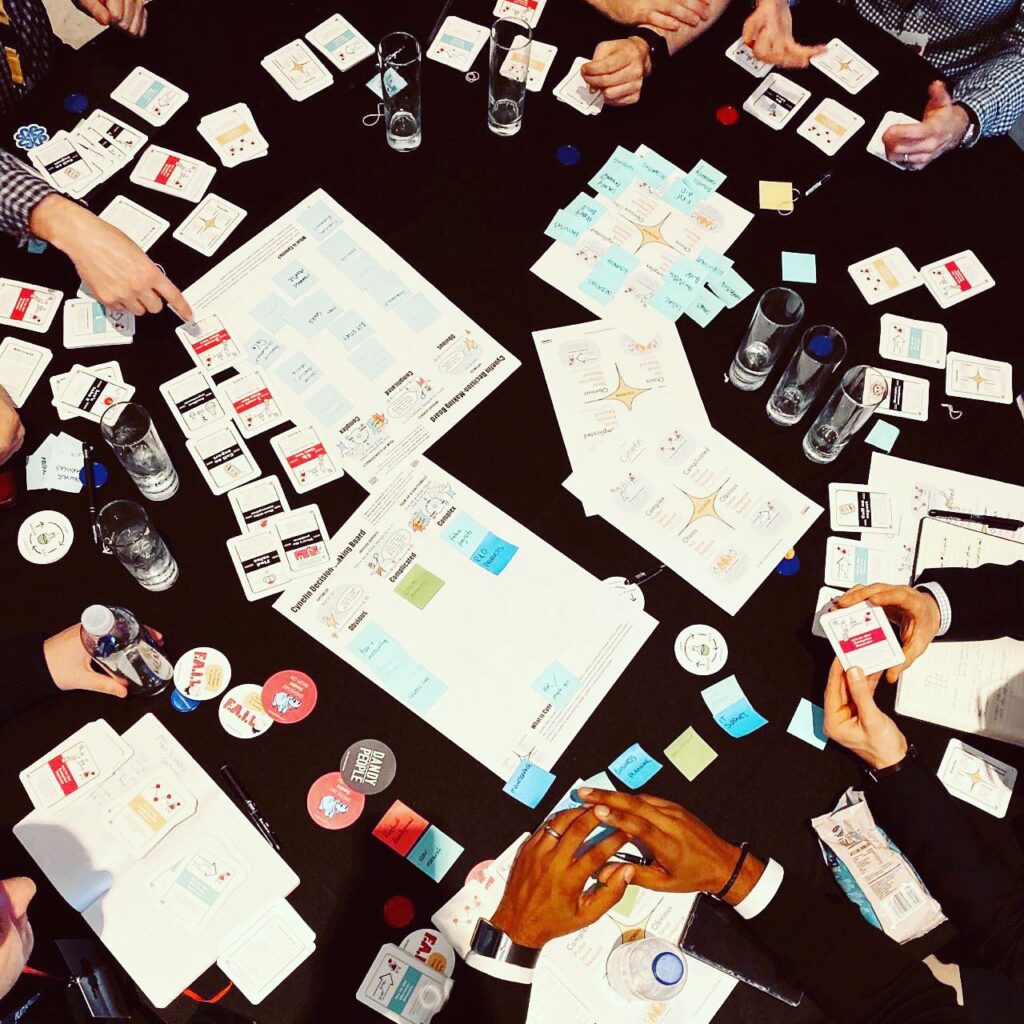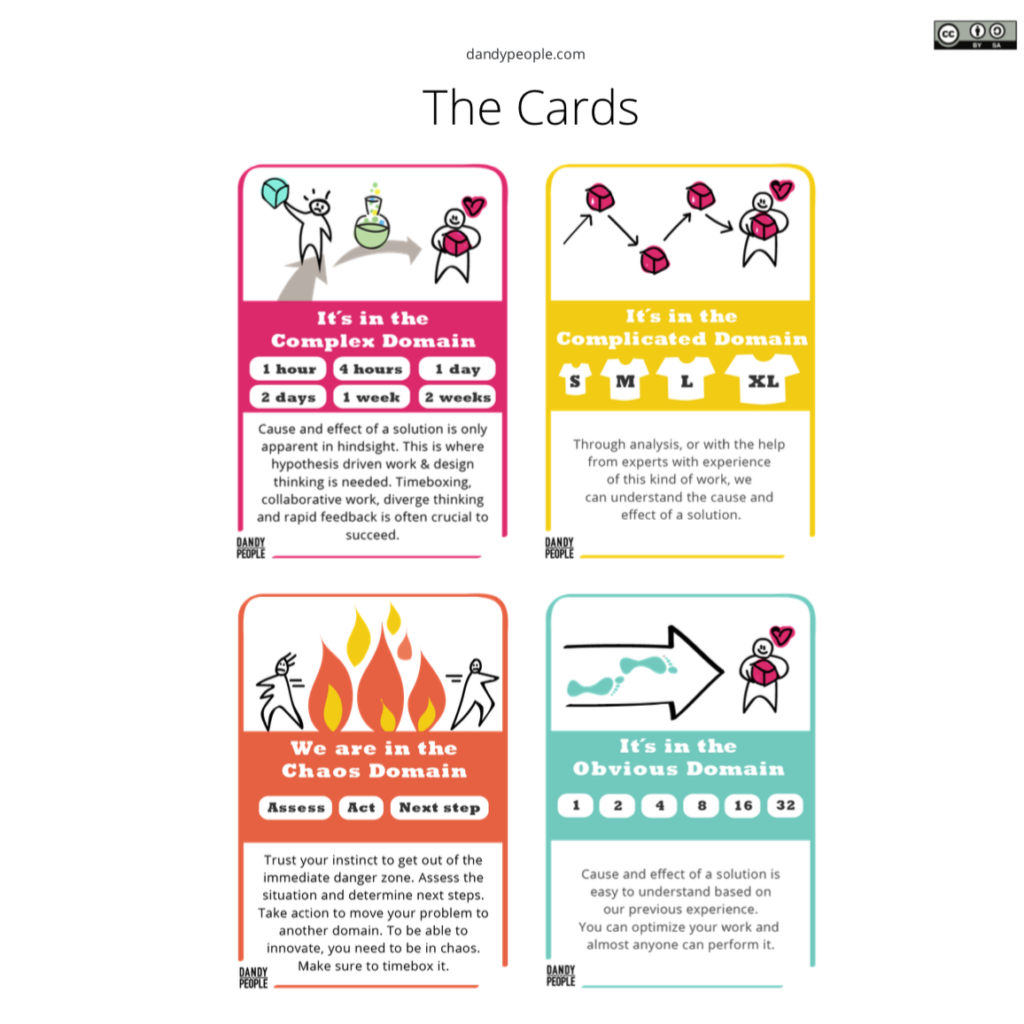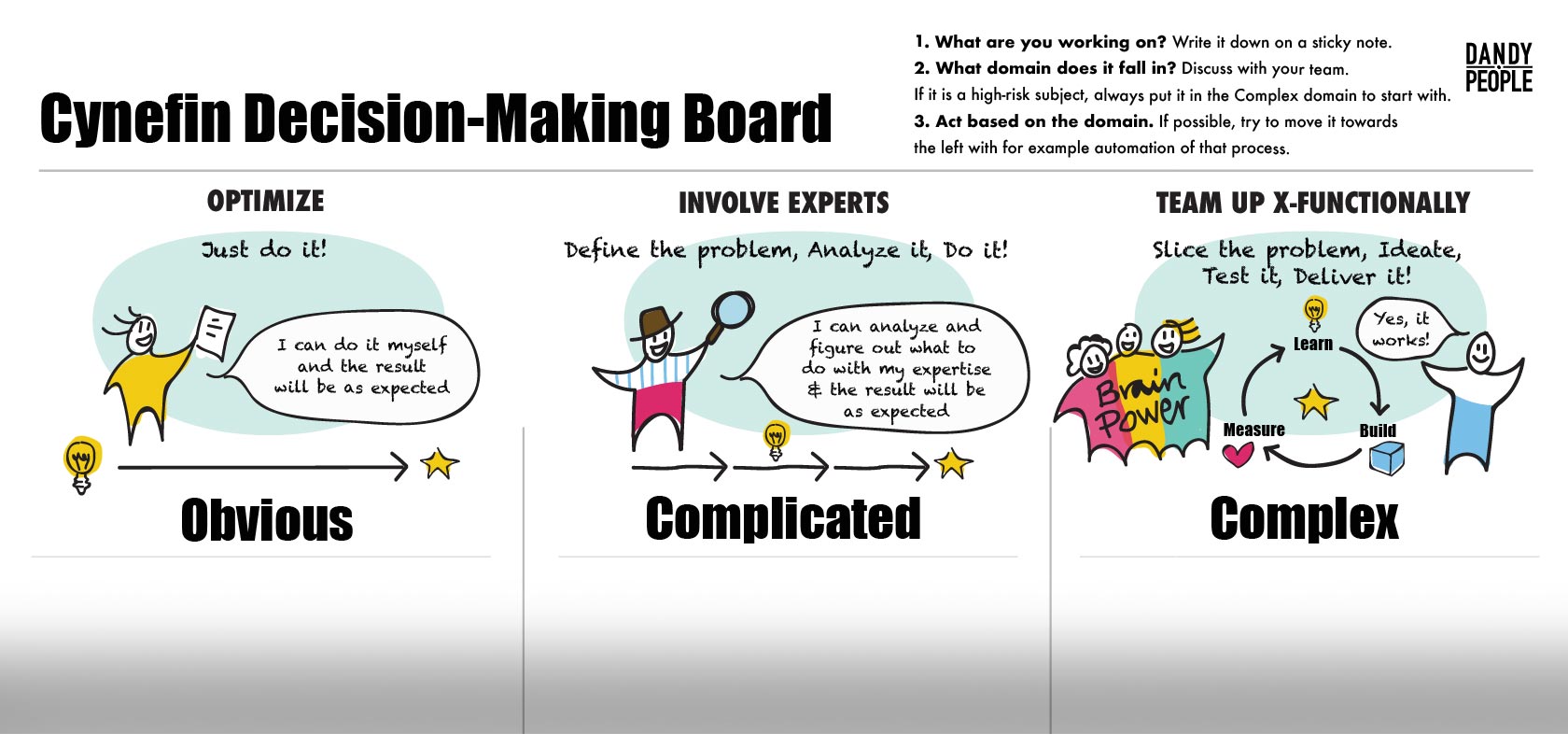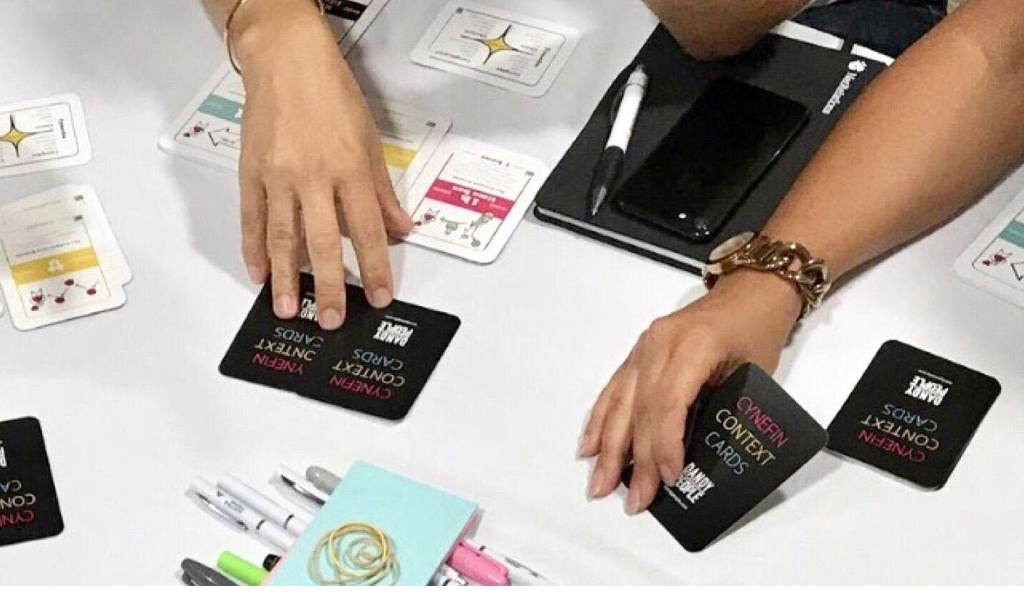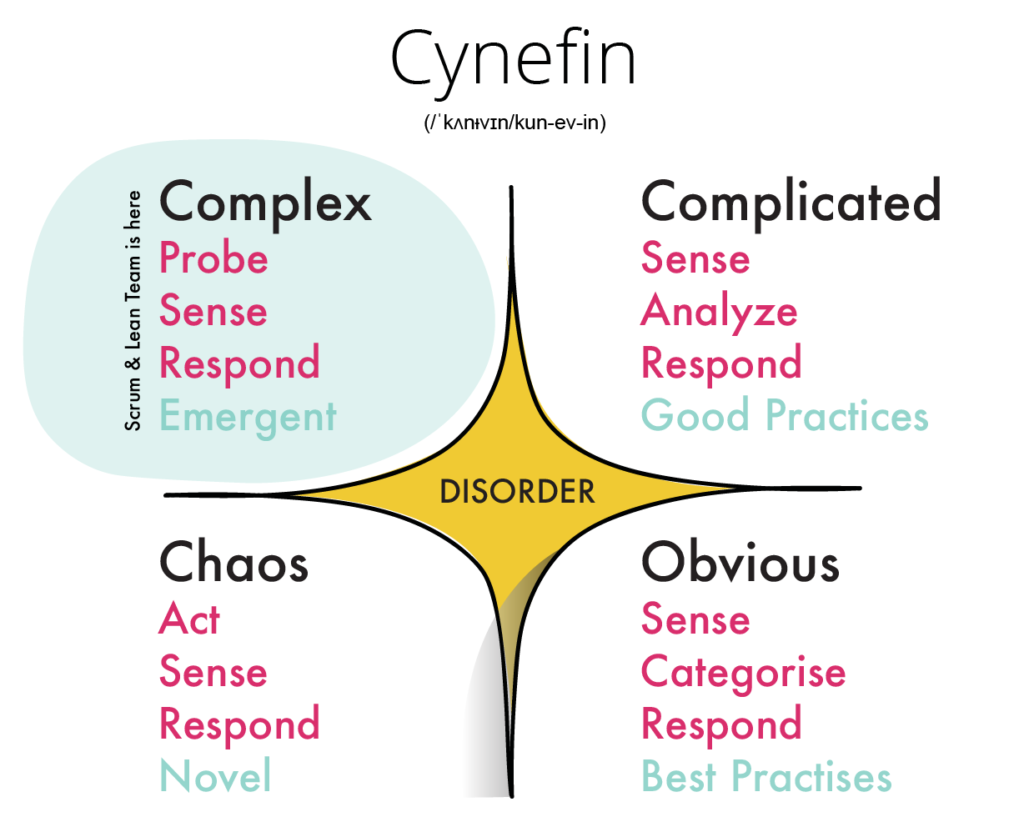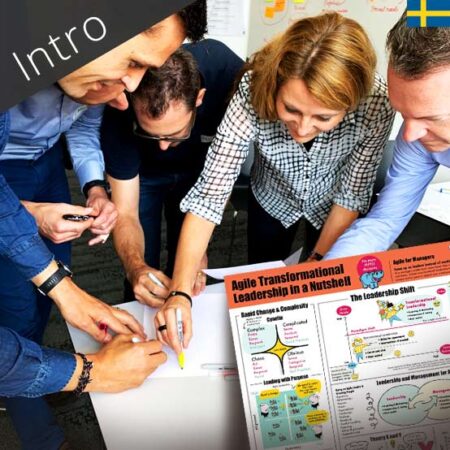
Free Download of the cards for printout (high resolution PDF) >
You can also purchase these decks of cards in our Online Shop >
These cards changes the concept of estimation and help teams work and think as a team to innovate and discover the solution of the product, instead of just delivering it. If you work in Scrum you can use them on your Refinement, or on the Sprint planning. If your’e in a Kanban team you use them when ever you have need of planning.
Background and WHY
Much too often we see organizations where there are many handovers end to end from understanding there is a customer need to actually delivering something to solve it. This situation causes not only long lead times, but it also kills innovation and it often result in delivery of the wrong solution. The reason is that we too often don’t understand the complexity of the problem, and treat it as a simple or complicated problem. To enable a change in thinking around how to solve different problems and also a change in behavior, we created these cards.
We are all as humans eager to move in to the “solution domain” to early, it´s just human, and we´ve all done it. Perhaps because it´s much more fun to ideate. And often that’s also what we get rewarded for. This makes us often solve either the wrong problem, or find the wrong solution – both leaving us without impact. When solving complex problems it is important to stay in the “problem domain” for a bit to learn about the problem, the context and the people who has the problem.
When we work in Agile teams we need to find ways to take in both complex, not yet solved problems, in to the sprint, as well as deliver on those already discovered solutions that we know will work. Often we call this continuously discovery & delivery, -something many Agile teams struggle with since the ordinary scrum way to do estimates in story points does not help teams stay in the problem domain, but often forces them to move in to the solution domain premature. Asking teams to estimate solutions creates a fixed mindset opposed to a growth mindset which is what we need to be able to build an innovating learning culture, otherwise the problem will show when the team try to build it, making it take longer to deliver, or when the customer uses the solution making them call customer service complaining, or leaving the service.
These cards are a tool to enable that growth mindset and open up dialogues between the people and competences needed to understand the problems and build the solution needed to create business and customer value. (more…)
